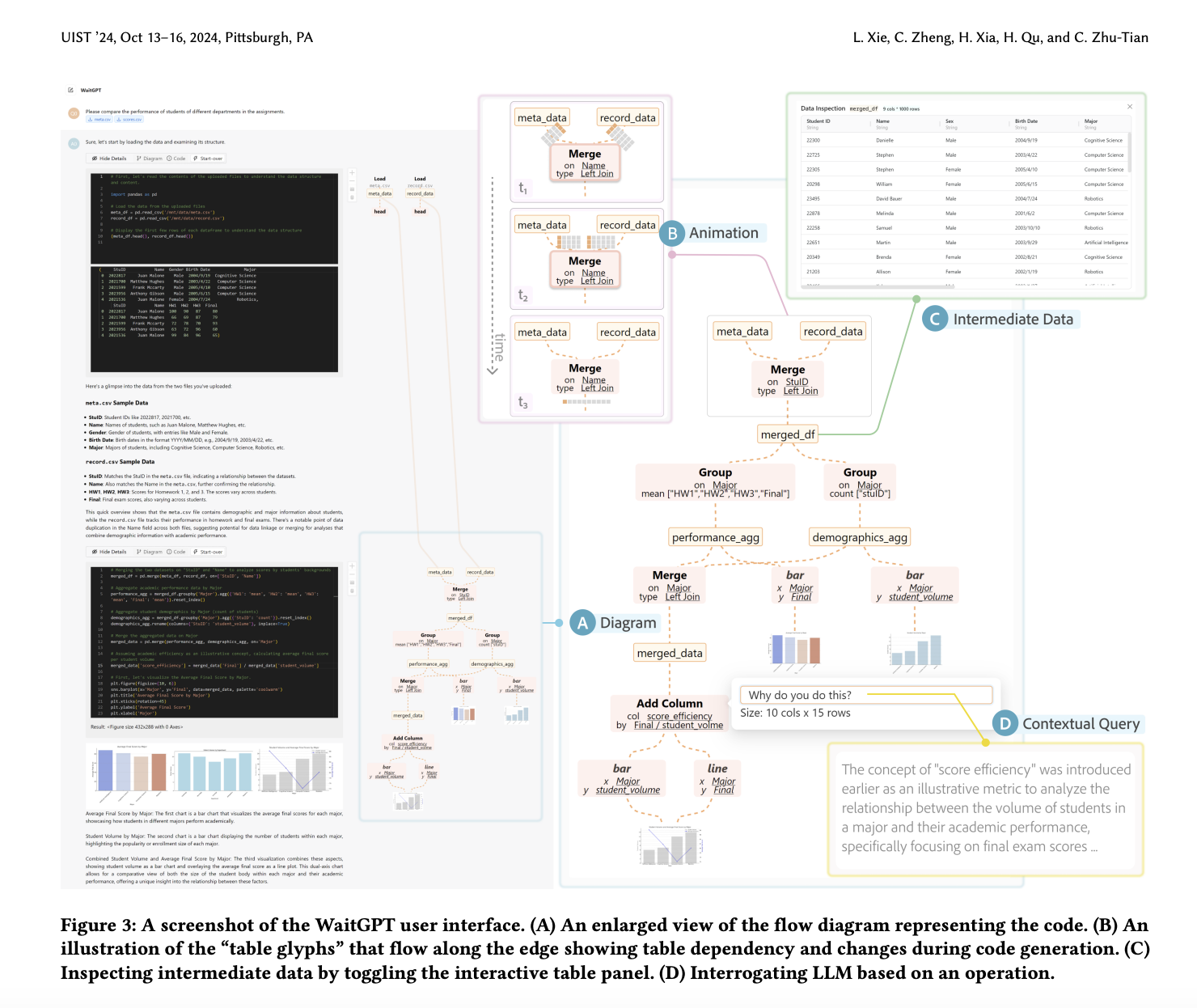
Data Analysis with Language Models
Large language models (LLMs) have made data analysis more accessible to individuals with limited programming skills. They simplify the process of code generation and enable complex data analysis through conversational interfaces.
Challenges of LLM-Powered Tools
The use of LLMs introduces challenges in ensuring the reliability and accuracy of data analysis, particularly due to the potential for errors and misinterpretations in the generated code. This may lead to results that do not align with the original objectives.
Existing Methods and Limitations
Tools like ChatGPT Plus, Gemini Advanced, and CodeActAgent focus on delivering code, but lack sufficient support for understanding the logic and data operations. This leaves users to navigate code verification and error correction independently, increasing the risk of undetected issues in the final analysis.
Introducing WaitGPT
WaitGPT transforms LLM-generated code into a visual representation that evolves in real-time, providing a clearer understanding of the data analysis process. It allows for proactive engagement, enabling users to verify and adjust the analysis as it progresses.
How WaitGPT Operates
WaitGPT breaks down the code into individual data operations visually represented as nodes within a dynamic flow diagram. It executes the code line by line, updating the visual diagram to reflect the current state of the data and the operations being performed.
Effectiveness of WaitGPT
A user study revealed that WaitGPT significantly improved users’ ability to detect errors in the analysis, reducing the time required to spot errors by up to 50%. The visual representation also made it easier to comprehend the data analysis process, leading to a more streamlined and user-friendly experience.
Enhancing Data Analysis Accuracy
The introduction of WaitGPT offers real-time visual representation of data analysis code and operations, addressing challenges in ensuring reliability and accuracy. It empowers users to make informed adjustments and has the potential to transform data analysis using LLMs.



























